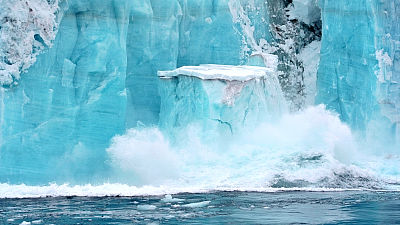It is reported that a super gigantic iceberg 'A23a' measuring approximately 4000 square kilometers has left Antarctica and started drifting

It has been reported that A23a , one of the world's largest icebergs, which is approximately twice the size of Tokyo and has been on the ocean floor of Antarctica for 37 years, has been moving since November 2023. Masu.
World's biggest iceberg moving beyond Antarctic waters | Antarctica | The Guardian
https://www.theguardian.com/world/2023/nov/27/worlds-biggest-iceberg-moving-beyond-antarctic-waters
World's largest iceberg breaks free, heads toward Southern Ocean | Reuters
https://www.reuters.com/business/environment/worlds-largest-iceberg-breaks-free-heads-toward-southern-ocean-2023-11-24/
A23a broke away from the Filchner-Ronne Ice Shelf in Antarctica in 1986, and subsequently grounded on the ocean floor of Antarctica's Weddell Sea .
A23a has an area of approximately 4,000 square kilometers, which is approximately twice the size of Tokyo, which has an area of 2,191 square kilometers, and approximately the same size as Shiga, Nagasaki, and Tokushima prefectures. Also, according to the overseas media BBC, the thickness of the ice is about 400 meters.
A23a had been grounded on the Antarctic ocean floor for over 30 years, but in November 2023, the British Antarctic Survey observed that A23a had come off the ocean floor and started drifting.
It's happening, after decades of being grounded on the sea floor we have a MASSIVE iceberg on the move..???? https://t.co/byIu3LPKWx
— British Antarctic Survey ???? (@BAS_News) November 24, 2023
According to the British Antarctic Survey, A23a, which started drifting, is moving towards South Georgia Island in the subantarctic region due to the influence of the Antarctic Circumpolar Current . The travel speed at the time of article creation is approximately 5 kilometers per day.
???? Double-whammy iceberg news this morning:
— British Antarctic Survey ???? (@BAS_News) November 24, 2023
1️⃣ The largest iceberg, A23a, is on the move!
Here's its journey out of the Weddell Sea after being grounded on the sea floor after calving in August 1986.
Copernicus Sentinel-1 imagery, Google Earth Engine ???? pic.twitter.com/KseKTD1Wrg
Oliver Marsh, a glaciologist at the British Antarctic Survey, said: 'It is extremely rare for an iceberg of this size to move, and a range of scientists will be closely monitoring its movements.' Masu. In addition, remote sensing expert Andrew Fleming explained why A23a, which had been on the ground for 37 years, has now started moving: ``As A23a has gradually shrunk over time, it has risen from the ocean floor and been pushed by ocean currents.'' It is thought that this may have happened.'
There are also concerns that A23a, which continues to move, could collide with South Georgia Island, and it has been pointed out that if it were to collide with South Georgia Island, it could cause serious damage to Antarctica and the wildlife living on the island. Masu. Marsh also said, ``Icebergs of this size have the potential to maintain their size for quite some time even as ocean temperatures rise, and if they move north toward South America, they could affect nearby shipping. It can happen.”
Related Posts:
in Science, Posted by log1r_ut







